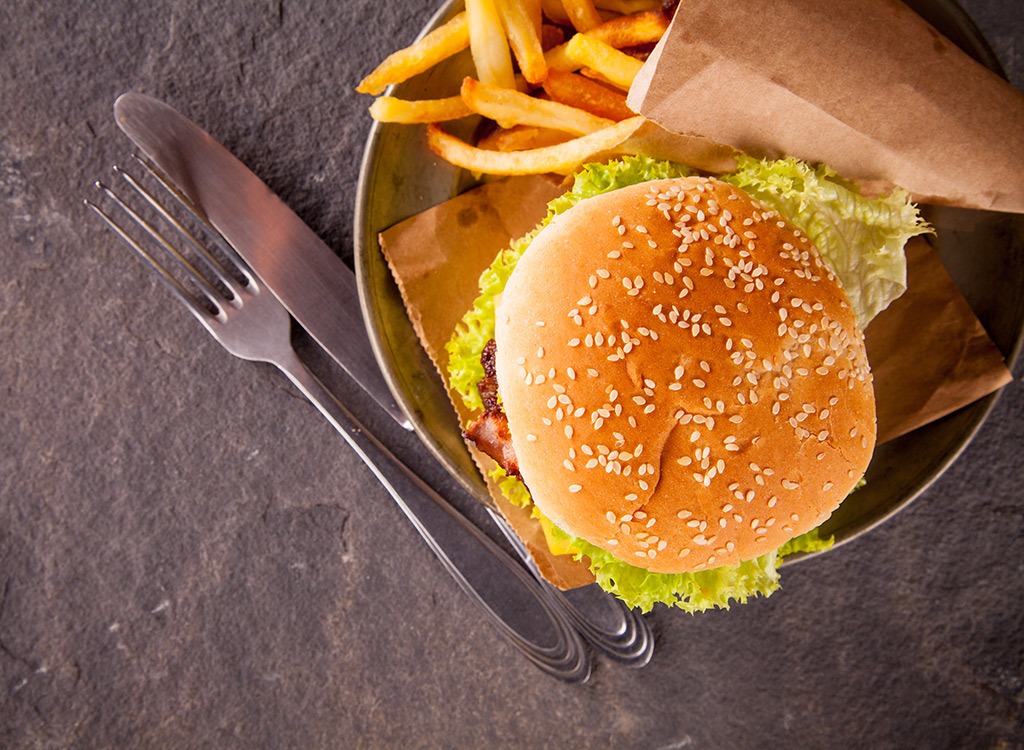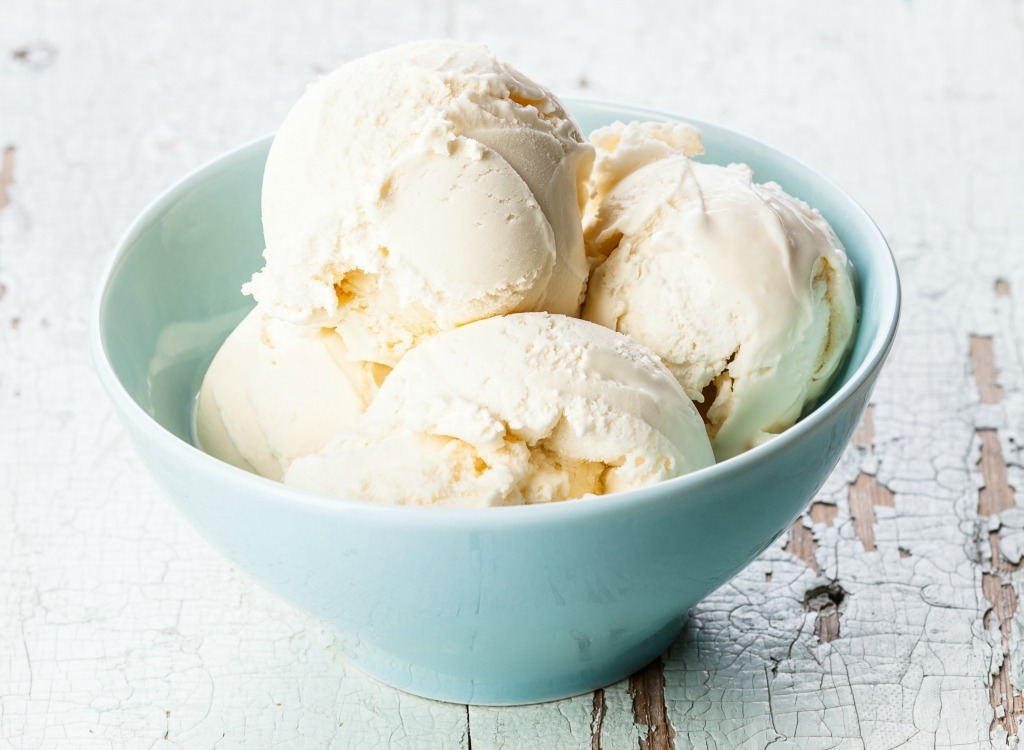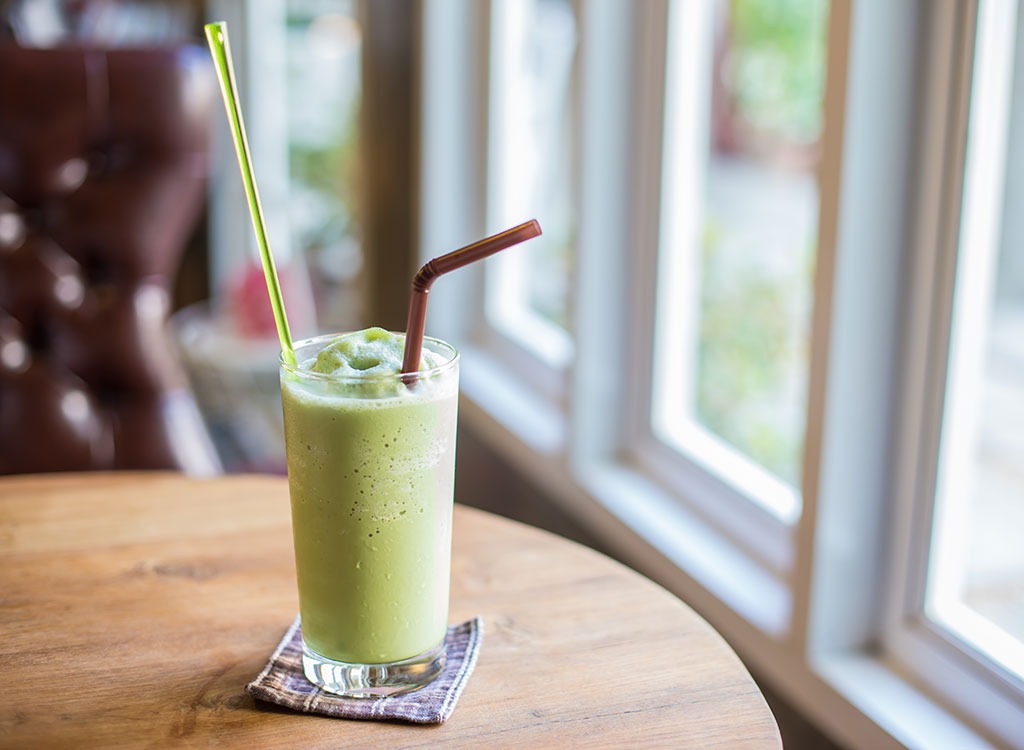20 Things You Should Never Eat at a Chain Restaurant

When you walk into a restaurant that's open for business, you should be allowed to assume that pretty much everything on the menu is safe to eat—but that's not the case. The truth is there are plenty of dishes on restaurant menus that will widen your waist, rob you of your hard earned cash, or worse, cause you to get sick.
While some bad-for-you dishes are restaurant-specific, there are a handful of things that are better left unordered no matter where you dine—and below, you'll find a list of those very items. Commit them to memory and vow to keep them off your plate for good—along with these Worst New Restaurant Dishes in America!
Medium-Rare Burgers

To you, a well-done steak is more cringeworthy than the Kanye West-Taylor Swift VMA debacle of 2009, and we totally get it. But when it comes to burgers, you're better off asking for it well done. When ground beef isn't cooked to at least 160°F, you risk consuming harmful bacteria. While an undercooked steak still contains the same germs, the microbes tend to stay on the surface and die off when exposed to heat. Ground meat, on the other hand, has the microbes mixed throughout, so they're less likely to die off when they hit the grill. To stay safe, ask for your burgers to be cooked medium or medium well.
Fast-Casual Pasta

Over the last few years, things like grown-up mac and cheese and chicken tortellini have been popping up at fast casual chains across the nation. And while you probably assumed your local Panera or noodle shop wasn't made from scratch by an Italian grandmother, there's actually a good chance that it was bought frozen and simply zapped in the microwave before landing on your plate. Gross, right? Unless you're 100 percent certain the pasta on your plate was at least made fresh from a box, it's not worth your money. Your best bet, however, is to make a pasta dish at home. These 20 Fat-Burning Pasta Recipes for Weight Loss all get our stamp of approval
The Value Meal

It may seem like a good deal to order off the value menu at your favorite fast food restaurant, but what you save in dollars you'll make up pounds. And that's because you have little wiggle room when it comes to dishes that wind up on your tray. For example, a McDonald's Extra Value Meal with a
Quarter Pounder with Cheese, medium fries, and a medium soda has 1,100 calories, 57 percent of the day's fat and half a day's sodium. Ordering a cheeseburger, water, and kids French fries à la carte, however, has just 410 calories, 26 percent of the day's fat, and 31 percent of the day's sodium. The bucket of calories you end up saving? 690.
Best-Sellers

Admittedly, it sounds a bit odd. But if you typically order the restaurant's most popular dish, you may be increasing your risk of foodborne illness. To keep up with demand, many restaurants pre-make their top selling dishes before the lunch and dinner rush. That means the food is simply sitting around collecting bacteria and developing food-borne illnesses—especially if it's something slathered in mayo and wrapped in a bag, like a chicken sandwich or a burger, explains Howard Cannon, author of The Complete Idiot's Guide to Starting A Restaurant. Less popular dishes are more likely to be prepared to order, so stick with those.
Eggs

Ordering an omelet or an egg sandwich from a local eatery is probably a safe bet, but a fair number of chain restaurants don't use fresh eggs in their kitchens. Often the patty-shaped eggs for sandwiches come frozen and restaurants will simply zap them in the microwave, while other times, eateries buy dehydrated eggs and simply bring them back to life with liquid. Some restaurant chains also bulk up their eggs with calorie-packed pancake batter—yes, we said pancake batter—to stretch their dollar further and bring in more profit. To play it safe, ask for hard boiled eggs or eggs sunny side up. Unlike scrambled eggs and omelets, it's hard to make a yolky egg look fresh and "pure" if it's not. For even more scary morning meals, check out (and steer clear of) these 20 Worst Breakfasts in America.
Lemons

Get this: About 70 percent of all lemons at restaurants are contaminated with bacteria, according to a Journal of Environmental Health study of 76 lemons from 21 restaurants.
Unless you actually see the bartender or waitress wearing gloves and using tongs to place your lemon wedge on your drink, your best bet is to stay away while dining out. When you're at home, though, citrusy detox water gets the green light!
Breakfast Pastries

Filled with globs of fat and mounds of sugar, you know that breakfast pastries like croissants, danishes, and muffins should only be eaten on occasion. But we'd argue that these sweet treats are only worth the calories when they're made fresh. Unless you see the pastries being baked in the kitchen, we suggest skipping out. Chains like Panera, Starbucks, and Dunkin Donuts typically warm up packaged or frozen pastries to give them that homemade allure. If you're going to indulge, wouldn't you rather eat something that's legit? We know we would! These frozen frauds aren't worth your time.
Raw Oysters

Dollar oysters may be one of the biggest happy hour trends of the summer, but slurp at your own risk. It doesn't matter if you're eating them at a local watering hole or a fancy restaurant, raw oysters can carry hepatitis A and Vibrio vulnificus, a bacterium that can cause vomiting and diarrhea. And despite what you may have heard, the FDA says that slathering hot sauce on the shell won't protect you. Your best bet is to order cooked oysters (which just so happen to be one of the 50 Best Foods for Your Penis, too).
Ice Cream

Unless it's a super unique flavor or made in-house, ice cream from a chain restaurant just isn't worth your money. You're essentially paying eight to ten times more for something you could just buy at the grocery store and enjoy at home. Save your restaurant dessert calories for something more unique.
Chips & Salsa

At many eateries, the chips and salsa are typically bottomless, meaning you can eat as many as you want. And considering we're naturally inclined to eat whatever is in front of us, this presents a major risk to your waistline. Your best bet is to order a protein- or fiber-rich starter with built-in portion control like a vinaigrette-topped salad, a hummus and veggie plate, or chicken skewers. For even more ways to eat smart when you're dining out, be sure to check out these 35 Tips to Healthy at Restaurants!
Pizza with Mushrooms

According to Reddit user and Papa John's employee, SuperSwoledier, you better avoid the mushroom when ordering a pie. "Don't order a pizza with mushrooms on it. We don't always check for mold, but when we do, we usually find some," he cautions. How appetizing!
Veggie Burgers

If you're a carnivore who just so happens to like veggie burgers, it may not bother you; but if we had to guess, we'd say it may irk vegetarians to learn that their precious patties are made on the very same grill as meat. Plus, more often than not, at fast food places, the veggie burgers are frozen and microwaved before they finishing browning 'em next to the beef burgers over the flame.
Water

"One of the most dangerous items in a restaurant is water," says Howard Cannon, author of The Complete Idiot's Guide to Starting A Restaurant. The reason: Anything that's 40°F to 140°F that is not consumed right away has strong potential for harboring bacteria. If your table has been pre-set with a carafe of water, or your water feels less than ice-cold, ask for a fresh cup of H20—stat!
Free Bar Snacks

Unless you're given a fresh bowl of bar snacks, munch at your own risk. Countless people put their hands in the pretzels and peanuts sitting on the bar, 95 percent of which don't wash their hands properly, according to a Michigan State University study. Translation: The free food at your local watering hole is likely covered in bacteria.
Alfalfa Sprouts

This common salad and sandwich ingredient grows in a warm, moist environment, making it the perfect breeding ground for salmonella and E.coli, two foodborne illnesses that cause symptoms such as vomiting, diarrhea, fever, gas, and abdominal cramps. Due to a history of multistate outbreaks connected to the vegetable, the FDA suggests avoiding raw sprouts when dining out—especially if you're pregnant. For even more foods to avoid when you're expecting, check out these 6 Life-Saving Food Swaps for Pregnant Women.
Shakes, Slushies, & Smoothies

According to numerous fast food and convenience shop workers, the machines that store and blend shakes, smoothies, or slushies are often filthy and moldy. "The coffee machines [are] completely descaled and cleaned every day as are the fizzy drink dispenser heads—but the other drinks machines [don't get that cleaning routine]," says one former McDonald's employee. "The amount of mold in those machines would crush your childhood into a pulp," notes a former gas station worker. If the calorie and sky-high sugar counts weren't enough to turn you off of the sips, maybe those bits of information, will.
Iceberg Lettuce

If you're a fan of the iceberg wedge salad, you should know that it's one of the restaurant industry's biggest rip-offs. "It's marked up at least 20 times," says executive chef and owner of California's Prima Ristorante, Peter Chastain. Save your green for a bed of greens that packs more of a nutritional punch—like romaine, kale, or spinach.
Cake

Unless the restaurant you're dining in has a pastry chef on premises, odds are good that the cakes and other desserts arrived frozen and in a box before they were thawed out, garnished with powdered sugar and fruit, and brought out to your table. Not only are these commercial cakes often packed with dangerous trans-fats, they're of no better quality than the frozen Sarah Lee cakes sold in the supermarket.
Tuna Salad

According to Reddit user and former Subway employee, the tuna salad is "80 percent mayonnaise." But like the pros they are, Subway immediately responded to this claim. "The tuna sub is the only seafood sub that is on the menu worldwide," a Subway spokesman told Eat This, Not That! "It's a testament to the popularity of it. The claim that the tuna sub is primarily mayo is simply untrue; the majority is skipjack tuna."
Our verdict? Whether it's a franchised store like Subway or a local mom 'n pop shop, it's not hard to imagine a sub shop owner employing this money-saving hack. If you're really craving something with jarred tuna (to each his own!), see if the restaurant will allow you to mix the mayo into the fish yourself. Not only will this help you to better control the amount of fat that winds up in your dish, it will also ensure you're consuming a fair amount of the omega-3-rich fish.
The Breakfast Special

Walk into any diner, Denny's, iHop, or fast food joint in the nation, and you'll likely see a "Breakfast Special" on the menu. The thing that makes it special is that it's actually not special at all. In fact, the dish often includes a nutrient-void combination of eggs, bacon, pancakes, toast, potatoes, or carbs, carbs, carbs, and more carbs. A better combination? Eggs with toast, fresh fruit, and bacon.








